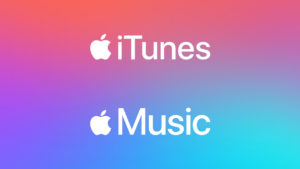Insurance is an essential aspect of modern-day living, and the United Kingdom is home to some of the world’s largest and most reputable insurance companies. With so many options available, it can be challenging to decide which insurer to choose. In this article, we will be looking at the top 10 insurance companies in UK, taking into account factors such as market share, customer satisfaction, and financial strength.
1. Aviva
Aviva is a multinational insurance company based in London, UK, with operations in 16 countries worldwide. It is one of the largest insurers in Europe and the UK and offers a wide range of insurance and investment products to individuals, families, and businesses.
The company has a long history, dating back to the establishment of the Hand in Hand Fire and Life Insurance Society in 1696. In the years that followed, the company went through several mergers and acquisitions, eventually becoming Aviva in 2002.
Today, Aviva operates in the UK, Ireland, Canada, France, Italy, Poland, Turkey, and several other countries. The company offers a range of insurance products, including life insurance, health insurance, car insurance, home insurance, and travel insurance, among others. It also offers investment and savings products, such as pensions, annuities, and investment bonds.
2. Direct Line
Direct Line is a well-known insurance brand in the UK, offering a range of insurance products, including car, home, and pet insurance. The company prides itself on its customer service and has won numerous awards for its quality of service. Direct Line also has a strong financial position, with a credit rating of A from Standard & Poor’s.
The company’s innovative approach to insurance sales was a game-changer in the industry. Customers could buy policies over the phone without having to visit an agent in person, which made the process faster and more convenient. Direct Line also became known for its emphasis on customer service and transparency, with its policies written in plain language and its call centers staffed by knowledgeable representatives.
Today, Direct Line is one of the UK’s largest insurers, with over 10 million customers. In addition to its insurance products, the company also offers a range of additional services, such as roadside assistance, home emergency cover, and legal assistance.
3. Legal & General
Legal & General is one of the UK’s leading insurance companies, offering life, health, home, and pet insurance. The company has a market share of around 10% and is known for its financial strength, with a credit rating of A+ from Standard & Poor’s. Legal & General also has an excellent reputation for customer service. This insurance company is also one of the best insurance companies in UK.
Legal & General operates in several markets, including the UK, the US, and Asia. The company’s products are designed to help individuals and businesses protect their financial futures and include life insurance, critical illness coverage, income protection, and more. The company also offers a range of investment products, including individual savings accounts (ISAs), unit trusts, and pensions.
In recent years, Legal & General has become increasingly involved in sustainable investing and has committed to investing in companies that are making a positive impact on society and the environment. The company has also launched initiatives to promote diversity and inclusion, both within its own organization and in the broader business community.
4. Zurich
Zurich is a global insurance company with a significant presence in the UK, offering a range of insurance products, including car, home, and travel insurance. The company is known for its financial strength, with a credit rating of A+ from Standard & Poor’s, and its commitment to customer service.
Zurich’s commitment to sustainability is reflected in its insurance products as well. The company offers a range of sustainable insurance solutions, including green building insurance, renewable energy insurance, and climate change resilience insurance.
Zurich is also committed to innovation and has developed several cutting-edge technologies to improve its products and services. The company has invested in artificial intelligence, blockchain technology, and other emerging technologies to streamline its operations and provide better service to its customers.
5. AXA
AXA is one of the largest insurance companies in the world, with a significant presence in the UK. The company offers a range of insurance products, including car, home, and travel insurance. AXA is known for its strong financial position, with a credit rating of A+ from Standard & Poor’s, and its commitment to customer service.
AXA has a strong reputation for innovation and has been recognized for its use of technology to improve customer experience and streamline operations. The company has developed mobile apps and online portals that allow customers to manage their policies and file claims easily and efficiently. AXA is one of the best insurance companies in UK.
Overall, AXA is a trusted and reliable insurance provider that is committed to helping individuals and businesses protect their financial futures. With a global reach and a focus on innovation and sustainability, AXA is well-positioned to meet the evolving needs of customers around the world.
6. RSA
RSA (formerly Royal & Sun Alliance) is a multinational insurance company based in London, UK. The company was formed in 1996 through the merger of Sun Alliance and Royal Insurance, two of the UK’s oldest insurance companies.
RSA operates in over 140 countries worldwide, with a strong presence in Europe, Asia, and Latin America. The company offers a range of insurance products, including home insurance, car insurance, travel insurance, and commercial insurance, among others. It also offers risk management solutions and consultancy services to businesses.
One of RSA’s key strengths is its focus on innovation and technology. The company has invested heavily in digital platforms and data analytics, which has helped it to improve its underwriting capabilities and offer more personalized products to its customers. RSA has also launched several initiatives to promote sustainability and responsible business practices, such as reducing its carbon footprint and promoting diversity and inclusion within its workforce.
7. Allianz
Allianz is a global insurance company with a significant presence in the UK, offering a range of insurance products, including car, home, and travel insurance. The company is known for its financial strength, with a credit rating of A+ from Standard & Poor’s, and its commitment to customer service.
Allianz’s insurance products are designed to meet the needs of individuals and businesses alike. The company offers a range of insurance products, including car insurance, home insurance, travel insurance, and more. Allianz’s asset management services are also designed to help individuals and institutions plan for a secure financial future, with a range of investment products designed to meet a variety of needs and risk profiles.
Today, Allianz is a global leader in the insurance and asset management industries. The company is committed to sustainability and social responsibility and has set ambitious goals for reducing its environmental impact and promoting social and economic development. Allianz has also established a foundation to support charitable causes around the world.
8. LV=
LV= is a British financial services company that was founded in 1843. Today, the company is known for its insurance and investment products and is one of the UK’s largest mutual insurers.
LV= is committed to offering transparent and straightforward products that are tailored to the needs of its customers. The company’s products include car insurance, home insurance, pet insurance, travel insurance, and more. LV= also offers a range of investment products, including ISAs, unit trusts, and pensions.
Overall, LV= is a trusted and reputable financial services provider that is committed to providing its customers with the products and services they need to plan for a secure and sustainable future. Whether you are looking for insurance or investment products, LV= has something to offer.
9. Ageas
Ageas is an international insurance company with a presence in Europe and Asia. The company has its roots in Belgium, where it was founded in 1824 as Assurances Générales. Today, Ageas operates in several markets, including the UK, France, Portugal, Turkey, Thailand, and China.
Ageas is committed to sustainability and corporate social responsibility. The company has set ambitious targets to reduce its carbon footprint and increase its use of renewable energy. Ageas is also involved in a range of charitable initiatives, including supporting local communities and providing disaster relief.
In addition to its insurance operations, Ageas is also involved in asset management and real estate investments. The company’s asset management division manages a range of investment funds, while its real estate arm invests in commercial properties and development projects.
10. NFU Mutual
NFU Mutual is a UK-based mutual insurance company that was founded in 1910 by the National Farmers’ Union. The company’s original purpose was to provide insurance and financial services to farmers, but it has since expanded to serve a wider range of customers, including individuals and businesses.
One of the unique features of NFU Mutual is its mutual status. This means that the company is owned by its policyholders, rather than by shareholders. As a result, the company is able to focus on the needs of its customers rather than on generating profits for shareholders. NFU Mutual is also known for its high levels of customer satisfaction, with a strong emphasis on personal service and a network of local offices across the UK.
In addition to its insurance products, NFU Mutual also offers a range of financial services, including pensions, investments, and savings products. The company has a strong commitment to sustainable investing and has launched several initiatives to promote responsible investing practices. NFU Mutual is also known as one of the best insurance companies in UK.
If you have questions about the application process, please contact us at techinfopk.



